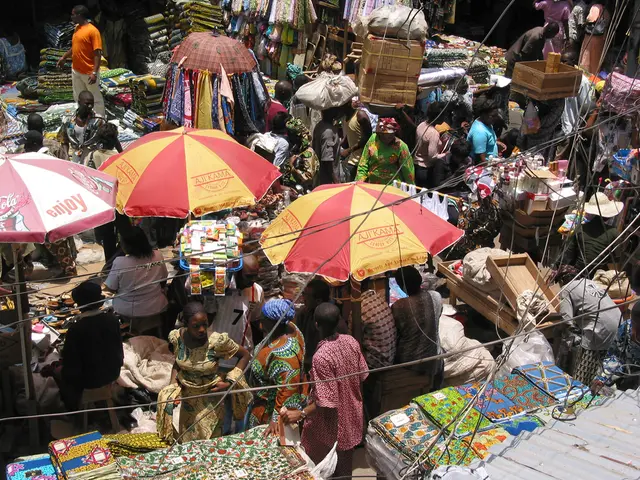A Glimpse at India's Expanding Forest Cover, Yet Concerns Remain
Expanding green expanse: India's vegetation coverage reached 25.17% of total territory, according to a recent study
Although India announced at the United Nations Forum on Forests (UNFF) that its forest and tree cover now spans 25.17% of its land area, experts have raised concerns about methodological flaws and ambiguities in the assessment.
India shared its forest growth at the UNFF, held from May 5 to 9, outlining multiple national conservation initiatives, including a 7.86% increase in mangrove coverage over the past decade, the afforestation of over 1.55 lakh hectares under the Green India Mission, and the planting of 1.4 billion seedlings under the Ek Ped Maa Ke Naam (Plant4Mother) campaign. The country also addressed a high-level panel on "Valuing Forest Ecosystems in National Policy and Strategy," presenting findings from pilot studies in Uttarakhand, Rajasthan, and various tiger reserves.
While India recognizes challenges in valuing non-market services, it emphasized integrating ecosystem valuation into national planning processes for informed forest governance and long-term ecological sustainability. The latest India State of Forest Report(ISFR) 2023, published by the Union Environment Ministry, shows an increase of 1,445 sq km in total green cover since 2021, equivalent to the size of Delhi. However, concerns regarding degradation of large forest tracts, increased plantations, and unclear 'unclassed forests' have been raised.
Experts worry that these developments could negatively impact biodiversity, forest-dependent communities, and the ecosystem services provided by old-growth forests. Critics pointed out several issues with the methodology, such ascounting plantations and orchards as forests and reporting the loss of 'unclassed forests.' Notably, the presence of definitional ambiguity, lacking reliable data, development versus conservation priorities, and climate resilience concerns persist.
Further, there are challenges in quantifying non-market services, limited community participation, and the choice of plant species for afforestation affecting the success of such initiatives. The way forward includes clarifying the definition of 'forest,' enhancing data collection, prioritizing sustainable development policies, and increasing community participation to bolster conservation efforts.
[1] "Valuing Forest Ecosystems in National Policy and Strategy." (2023). Union Ministry of Environment, Forest and Climate Change(MOEFCC), Government of India. [2] "Central India districts face high vulnerability, low climate resilience." (2021). Down to Earth. [3] "The State of Forests in India: Assessments, Challenges and Opportunities." (2021). Centre for Science and Environment(CSE). [4] "The Quantification of Ecosystem Services: Challenges and Solutions." (2019). Environmental Science & Policy.
- To address concerns about degradation and unclear 'unclassed forests', India should consider moderately integrating science-based definitions and reliable data into its forest policies.
- The Indian government's emphasis on valuing forest ecosystems in national policy and strategy is crucial in combating climate-change and promoting environmentally sustainable real-estate developments.
- Adopting a more detailed approach to valuing non-market services, such as biodiversity and ecosystem services, could lead to more informed forest governance and sustainable business practices in India.
- Experts advise addressing definitional ambiguities in the ISFR, developing technologies to accurately report forest loss, and prioritizing community involvement to increase the success of afforestation initiatives.
- As deforestation continues to threaten India's Aravalli hill range and its biodiversity, policymakers should consider integrating environmental-science knowledge into climate-change policy to protect old-growth forests.
- In order to ensure long-term ecological sustainability, investing in Afforestation & Reforestation projects that incorporate native plant species and community engagement is essential.
- Despite India's efforts in addressing deforestation, concerns remain about the adverse impact on forest-dependent communities and biodiversity as a result of ambiguity in defining 'forests' and plantation practices.
- Investing further in Environmental-Science research, improved data collection, and sustainable development policies will assist India in striking a balance between economic growth and environmental conservation.








